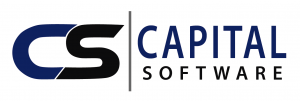Explore the Evolution of Programming Language
The evolution of programming languages has been a fundamental aspect of the development of software over the decades. From the earliest machine languages to modern high-level languages, each stage of development has brought innovations that have improved the efficiency, ease of use, and power of software creation.
1. First Generation: Machine Language
- The first programming languages were machine languages, consisting of binary code (0s and 1s) that the computer’s hardware could directly understand. Writing programs in machine language was complex and error-prone, requiring a deep understanding of the machine’s architecture.
2. Second Generation: Assembly Language
- Assembly language was a step up, allowing programmers to use symbolic representations of the machine code instructions. Although still closely tied to the hardware, it made programming somewhat easier by introducing mnemonic codes (like ADD for addition). However, assembly language was still considered low-level.
3. Third Generation: High-Level Languages
- Fortran (1950s), COBOL, C: High-level languages like Fortran and COBOL abstracted away the details of the machine, allowing developers to write more complex programs without worrying about hardware specifics. C, in particular, became highly influential due to its combination of low-level access and high-level abstraction, forming the basis for later languages.
- These languages introduced more readable syntax, making it easier to learn and write software efficiently.
4. Fourth Generation: Declarative Languages
- SQL, MATLAB, R: Fourth-generation languages (4GLs) were designed to be even more abstract and closer to human language. They are often used for specialized tasks, such as database queries (SQL) or statistical analysis (R). These languages focus on “what” the programmer wants to achieve, rather than “how” it should be done.
5. Fifth Generation: AI and Logic-Based Languages
- Prolog, Lisp: Fifth-generation languages emerged with the aim of solving problems using artificial intelligence (AI) techniques. These languages are logic-based, meaning that the programmer provides a set of rules and the system determines how to achieve the goal. They have been used in AI research, but their practical applications are more niche.
6. Object-Oriented Programming (OOP)
- C++, Java, Python: The OOP paradigm, which became widely popular in the 1980s and 1990s, introduced the concept of objects—self-contained modules of code that contain both data and the functions that operate on that data. This led to more modular, reusable, and scalable code. Languages like C++, Java, and Python (which later embraced OOP) revolutionized software development with their support for this programming model.
7. Scripting Languages and the Web Era
- JavaScript, PHP, Ruby: The rise of the internet in the 1990s and 2000s gave rise to scripting languages designed for web development. JavaScript, in particular, became ubiquitous in front-end web development, while languages like PHP and Ruby gained popularity for server-side programming.
8. Modern Trends: Functional Programming and Multiparadigm Languages
- Scala, Rust, Kotlin: Recent trends have seen a revival of functional programming, which treats computation as the evaluation of mathematical functions and avoids changing states or mutable data. Scala and Rust have introduced more functional features, while languages like Kotlin offer flexibility by supporting multiple programming paradigms (OOP, functional, etc.).
9. Future Directions
- Quantum Computing, AI-Driven Development: As quantum computing and AI advance, we may see the development of new programming paradigms and languages designed to handle these emerging fields. New languages may focus on handling distributed computing, machine learning models, and the complexity of quantum algorithms.
Conclusion of Evolution of Programming Language
Evolution of programming languages has been characterized by increasing abstraction, ease of use, and the ability to handle more complex tasks. From machine-level languages to high-level, declarative, and functional paradigms, each new generation has brought innovations that continue to drive the growth and capability of software development.



